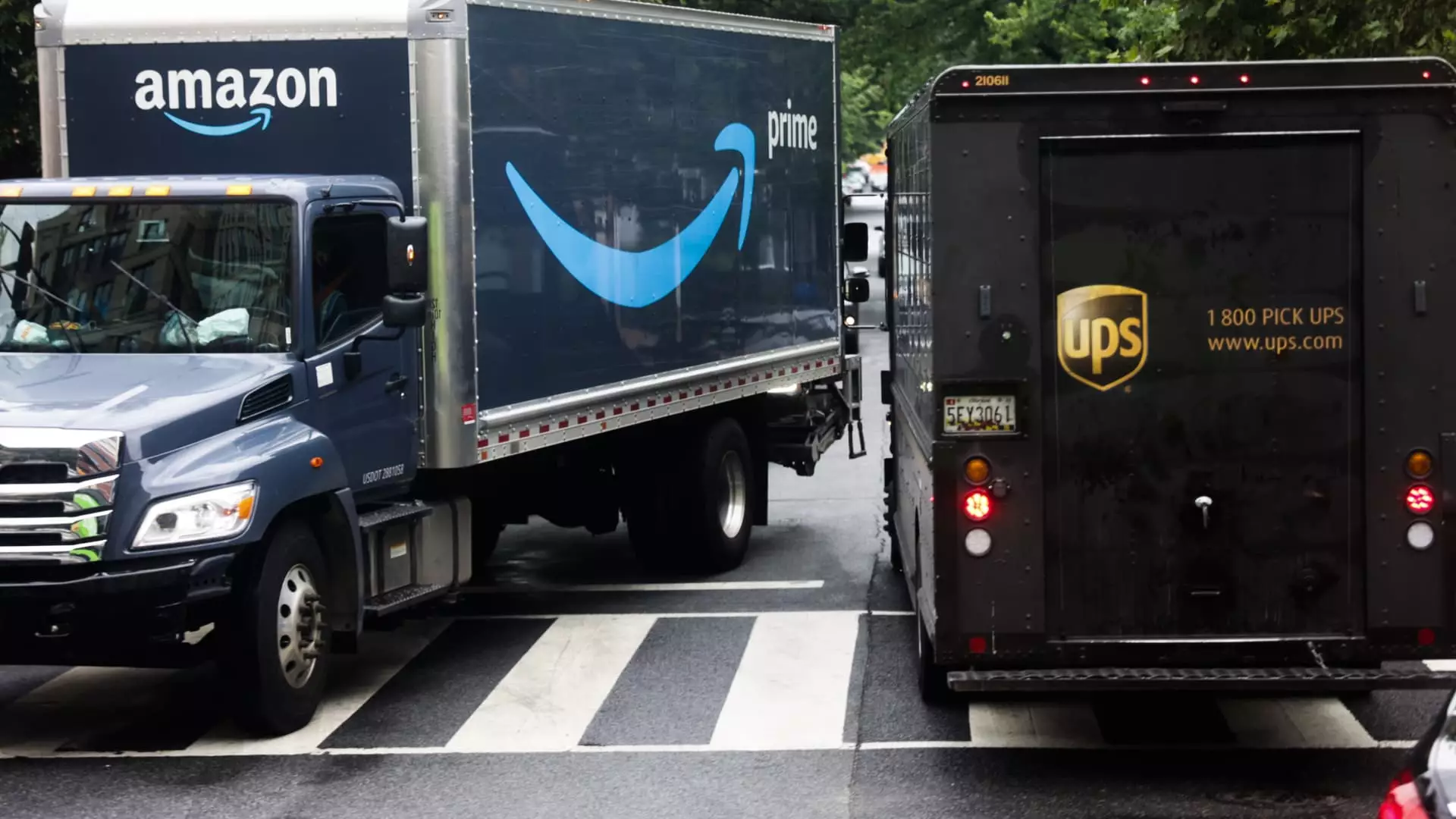In a significant turn of events, United Parcel Service (UPS) has recently experienced a staggering decline in its stock value, with over a 17% plunge following the company’s announcement of discouraging revenue forecasts. This drop, attributed mainly to an anticipated reduction in delivery volumes for Amazon—its largest customer—hints at the broader strategic recalibrations within the logistics sector. UPS revealed that it had reached an initial agreement to slash its delivery volumes for Amazon by over 50% by the latter half of 2026. This announcement paints a grim picture for investors and reflects larger trends impacting the industry.
The relationship between UPS and Amazon has evolved over the years, transitioning from a mutually beneficial partnership to a more complex dynamic. While Amazon remains UPS’s top client, CEO Carol Tome emphasized during a recent earnings call that this does not equate to profitability. She noted that Amazon’s business significantly dilutes UPS’s profit margins, highlighting the reality that what may appear lucrative in volume can, in fact, strain operational efficiency. The strategic decision to reduce deliveries points to a pivotal moment where UPS must prioritize profitability over sheer volume and navigate what could be a precarious future without its largest customer’s contribution.
Amazon, for its part, acknowledged the situation, stating that they respect UPS’s request for volume reduction, although the retail giant previously voiced intentions to increase volumes through UPS. This complex interplay indicates that while the companies will continue to collaborate, the parameters of their partnership may shift dramatically, necessitating both to adapt to the changing landscape of logistics.
In light of these developments, UPS is not standing idly by. The company has outlined a series of strategic initiatives aimed at boosting its efficiency and profitability, projecting savings of around $1 billion through network reconfiguration and operational changes. Tome conveyed optimism about UPS’s ability to adapt, asserting that the ongoing foundational changes will lead the company down a path of enhanced agility and market differentiation. UPS’s forecasts indicate a decline in prospective revenue for 2025, further underscoring the urgency behind these transformations.
The shipping giant is addressing its service portfolio, focusing on catering to higher-margin clients while shedding less profitable contracts. Such a strategic pivot is crucial in an increasingly competitive industry, where emerging players pose plausible threats to traditional logistics models. Moreover, the recent success of companies like Temu and Shein highlights that UPS can tap into the rising demand from bargain retailers, whose volume can offset the losses from Amazon.
Simultaneously, Amazon’s endeavors to establish its logistics capabilities signal a shift in the delivery ecosystem. Over the past several years, the company built substantial in-house logistics infrastructure, minimizing reliance on USDA carriers like UPS and FedEx. This strategic maneuvering has resulted in Amazon developing an expansive transportation network, including planes and vehicles dedicated solely to its delivery needs. The outsourcing of logistics is rapidly changing, pushing traditional carriers to refine their service offerings and adopt more cost-effective business practices.
As Amazon increasingly controls its delivery narrative, logistics companies must adapt to a landscape where customer loyalty can’t be assumed. The race for logistics superiority will manifest in investment from UPS and other carriers striving to maintain a competitive edge amidst changing consumer demands.
The dynamics between UPS and Amazon are reflective of broader shifts within the logistics landscape, characterized by changing customer relationships, evolving service needs, and rising operational demands. UPS’s recent strategies, while aiming for profitability, must also contend with the competitive pressures exerted by a self-sufficient Amazon and others. As a new era beckons in this industry, both giants will face challenges and opportunities that require innovative approaches and relentless adaptability. The ultimate question remains: can UPS navigate this landscape successfully, or will it be at the mercy of the evolving e-commerce infrastructure? Only time will tell how these adjustments affect the broader shipping industry and consumer experiences in the years to come.

